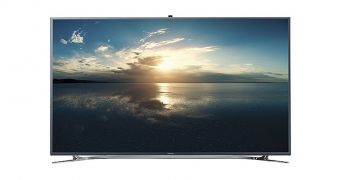Ultra high definition displays, also known as UHD, have only been around for a couple of years, but they are already becoming “affordable,” which puts them among the product markets that reached maturity the fastest.
According to a report, made earlier this year, by NPD DisplaySearch analyst firm, around 2 million UHD monitors would be sold in 2014.
That may seem like a small number, until you realize that the analyst company is talking only about UHD monitors.
UHD TVs are expected to reach around 12 million shipments this year, but their customer base is different, more multimedia-inclined.
Monitors, by comparison, aren't about to see the same demand. After all, they are smaller than high-end TVs, and 3840 x 2160 pixels don't make much of a difference to the naked eye compared to Full HD (1920 x 1080) on, say, a 27-inch LCD.
Still, 2 million is more than previously anticipated, and is solely owed to how rapidly prices have fallen below $1,000 / €1,000. Considering that they sold for tens of thousands not a year ago, that is great progress.
According to Hardware.info, the price of the 28-inch Samsung LU28D590D will be of €600 when it gets launched in the middle of 2014. That's around the same as $800 and £500, give or take.
Clearly, UHD display technology has become affordable, matured as a market as it were, faster than 3D displays.
Granted, the Samsung monitor mentioned above has a cheap TN-film panel made by Chimei (CMO), but it's still a 4K monitor.
It will make for a decent long-term replacement. Say you own or know someone who owns a monitor they bought 5 to 10 years ago and it's high time it got replaced. A 4K monitor could be a fine, future-proof upgrade if you don't want to worry about buying a better one for a while.
Of course, if you have the money for it, you may as well get a larger 4K TV instead. It'll set you back several grand, or tens of grand, but it will last you for a lot longer and let you enjoy a movie night with your friends and family too.
Anyway, it's becoming clear that Full HD and WUXGA (1920 x 1200) aren't cutting it anymore, or won't cut it for much longer. It's just surprising that the display industry didn't use 2560 x 1440/1600 (WQHD/WQXGA) as a stepping stone instead of jumping straight to 4K.

 14 DAY TRIAL //
14 DAY TRIAL //